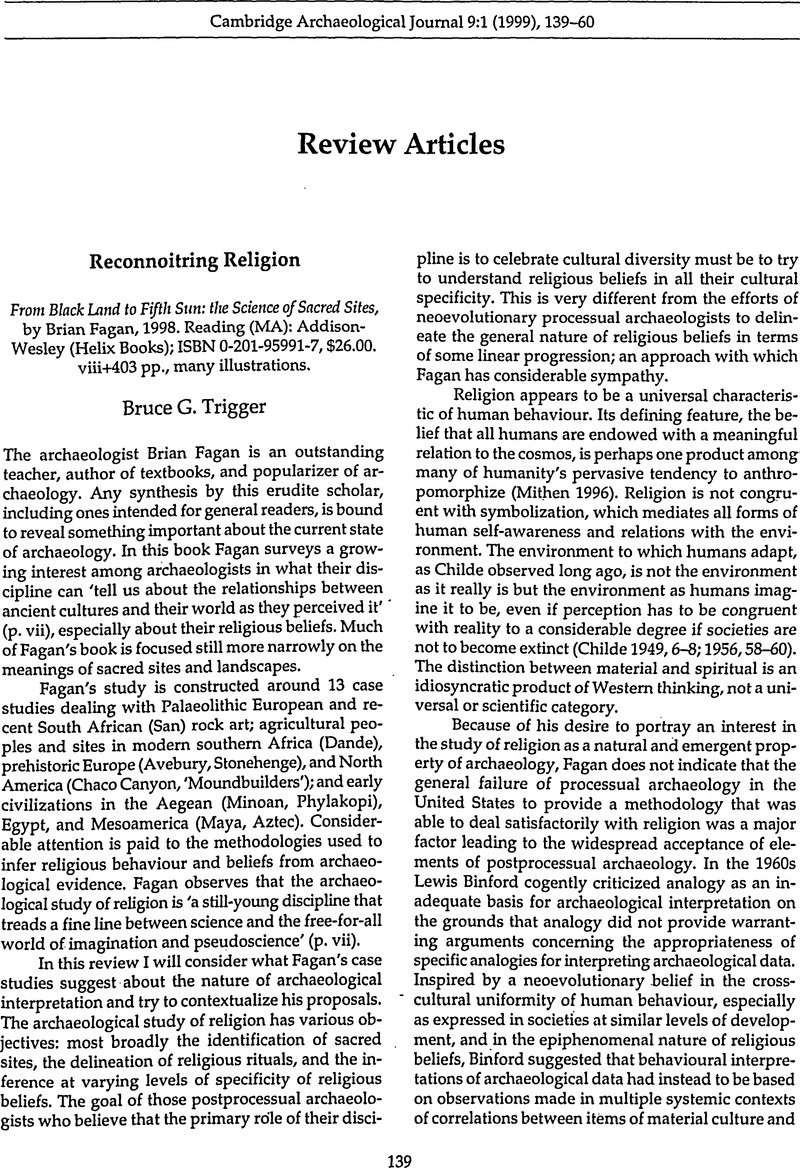Crossref Citations
This article has been cited by the following publications. This list is generated based on data provided by Crossref.
Emerson, Thomas E.
Dancey, William S.
Pauketat, Timothy R.
Whittle, Alasdair
DeMarrais, Elizabeth
DeBoer, Warren R.
and
Kehoe, A.B.
1999.
Cahokia and the Archaeology of Power.
Cambridge Archaeological Journal,
Vol. 9,
Issue. 2,
p.
249.
Cruz Berrocal, María
2011.
Analogical Evidence and Shamanism in Archaeological Interpretation: South African and European Palaeolithic Rock Art.
Norwegian Archaeological Review,
Vol. 44,
Issue. 1,
p.
1.



